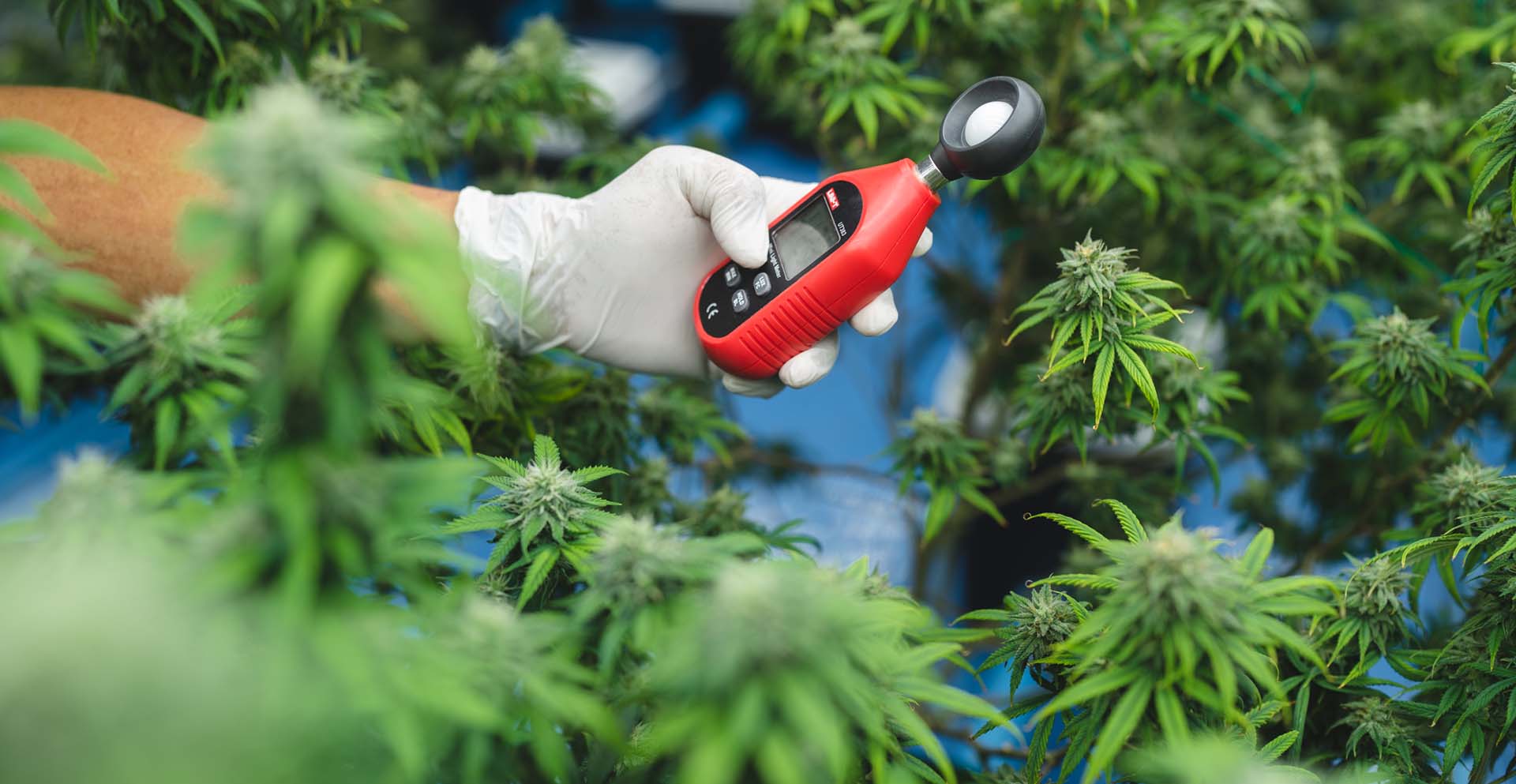Now accepting clients for New York, Maryland, Delaware, and Missouri! Please contact us if you have questions.
How to Develop a Cannabis Brand: A Step-by-Step Guide
Table of Contents
Have you ever wondered how to develop a strong cannabis brand that stands out in the competitive market?
Building a reputable brand is not just about selling products; it’s about establishing trust and credibility with your consumers. By developing a unique and strong brand identity, you can effectively connect with your target audience and create lasting relationships.
In the rapidly growing cannabis industry, where new marijuana brands are emerging every day, having a well-developed brand is crucial. It can drive customer loyalty and repeat business, giving you an edge over competitors. Investing in branding is an investment in long-term success and growth.
But where do you start? How do you create a cannabis brand that resonates with consumers? This blog post will guide you through the essential steps of cannabis branding. From understanding your target market to crafting compelling messaging, we’ll explore the key elements that make up a successful cannabis brand.
So, if you’re ready to take your cannabis business to the next level by developing a strong and distinctive brand, keep reading! Let’s dive into the world of cannabis branding together.

Define your brand identity: Values, mission, target market
Defining your brand identity is a crucial step in developing a successful cannabis brand. It involves clearly establishing your core values, crafting a compelling mission statement, and understanding your target market. By aligning your brand with the values of the cannabis community and conducting thorough market research, you can create a strong foundation for your brand’s success.
Clearly define your core values to guide your decision-making process.
Your core values are the guiding principles that shape every aspect of your business. They serve as the compass for decision-making and help establish a consistent brand image. When developing a cannabis brand, it’s important to identify what you stand for and what sets you apart from competitors.
Consider what aspects of the cannabis industry are most important to you. Is it quality? Sustainability? Cannabis consumer education? By clearly defining these core values, you can ensure that they permeate through all aspects of your brand—from product development to marketing strategies.
For example, if one of your core values is quality, make sure that every product you offer meets high standards. This will not only build trust among consumers but also differentiate you from brands that prioritize quantity over quality.
Craft a compelling mission statement that reflects your purpose and goals.
A well-crafted mission statement communicates the purpose and goals of your cannabis brand in a concise yet impactful manner. It should reflect the essence of a strong brand, what you aim to achieve and resonate with both internal stakeholders and external audiences.
When formulating your mission statement, consider how you want to contribute to the cannabis industry or society as a whole. Are you focused on providing access to medicinal marijuana? Promoting responsible recreational use? Educating consumers about different strains?
By articulating this purpose in an engaging way, you can attract like-minded individuals who share similar values and beliefs. Your mission statement should inspire both employees and customers alike while serving as a reminder of why your brand exists in the first place.
Identify and understand your target market’s demographics, preferences, and needs.
To effectively develop a cannabis brand, it is crucial to identify and understand your target market. This involves analyzing their demographics, preferences, and needs to tailor your products and marketing strategies accordingly.
Start by researching the age range, gender distribution, geographic location, and other relevant demographic factors of your target audience. This information will help you create targeted messaging that resonates with them on a deeper level.
Delve into their preferences and needs. Are they seeking pain relief? Relaxation? Recreation? Understanding these motivations will enable you to position your brand as the go-to solution for their specific requirements.
By gathering insights through surveys, focus groups, or online research tools, you can gain a comprehensive understanding of who your target market is and how best to serve them.
Aligning your brand identity with the values of the cannabis community is crucial.
The cannabis community has its own set of values and beliefs that are deeply ingrained in its culture. To develop a successful cannabis brand, it is essential to align your brand identity with these values while maintaining authenticity.
Research the values that are important within the cannabis community—such as social justice, sustainability, or accessibility—and find ways to incorporate them into your brand. This could involve partnering with organizations that support these causes or adopting sustainable practices in your operations.
By demonstrating a genuine commitment to these shared values, you can build trust and loyalty among successful brands and among consumers within the cannabis community. They will see your brand as more than just a business but as an ally working towards common goals.
Conduct thorough market research to identify gaps or opportunities within the industry.
Market research plays a vital role in developing a successful cannabis brand. It helps you identify gaps or opportunities within the industry that can be leveraged for growth and differentiation.
Analyze competitors’ offerings to understand what they are doing well and where they may be falling short. This will allow you to identify areas where your brand can provide a unique value proposition.
Keep an eye on emerging trends and changing consumer preferences. By staying ahead of the curve, you can position your brand as innovative and responsive to evolving market demands.
Thorough market research also involves understanding the legal landscape and regulatory requirements specific to the cannabis industry. Compliance with these regulations is essential for building trust and credibility among consumers.

Establish brand visuals: Name, logo, visual identity
Creating a strong and memorable brand is essential for success in the cannabis industry. Your brand visuals play a crucial role in establishing your identity and attracting your target audience.
Choose a memorable name that resonates with your target audience.
The first step in establishing your brand visuals is selecting a name that captures the essence of your cannabis business and resonates with your target audience. A memorable name can make a lasting impression on consumers and set you apart from competitors. Consider the following factors when choosing a name:
Brand Identity: Think about what makes your cannabis brand unique. Is it focused on wellness, luxury, or sustainability? Your name should reflect these core values and help communicate what sets you apart.
Target Audience: Understand who you are trying to reach with your products or services. Research their preferences, interests, and demographics to ensure that the name appeals to them.
Brand Personality: Determine the personality traits you want to convey through your brand. Are you aiming for sophistication, fun, or innovation? The name should align with the desired perception.
Legal Considerations: Check for any legal restrictions or trademark conflicts before finalizing the name. Ensure that it complies with applicable regulations in different states where you plan to operate.
By carefully considering these aspects, you can choose a compelling name that resonates with your target audience while staying true to your brand’s identity.
Design a visually appealing logo that represents your brand’s personality.
Once you have established a strong name for your cannabis brand, it’s time to design an eye-catching logo that embodies its personality. A well-designed logo serves as the face of your company and helps create instant recognition among consumers. Here are some key considerations when designing a logo:
Simplicity: Keep the design clean and uncluttered. A simple logo is more memorable and versatile across different marketing materials.
Relevance: Ensure that the logo reflects the nature of your cannabis business. Consider incorporating elements such as cannabis leaves, flowers, or other relevant symbols.
Color Palette: Choose colors that align with your brand’s identity and evoke the desired emotions. Green is often associated with cannabis, but don’t be afraid to explore other colors that complement your overall visual identity.
Typography: Select fonts that are legible and appropriate for your brand personality. Experiment with different styles to find the perfect balance between uniqueness and readability.
Remember, a well-designed logo should not only look visually appealing but also communicate your brand’s values, mission, and offerings effectively.
Create consistent visual elements such as color palette and typography for cohesive branding.
Consistency is a key component. By creating consistent visual elements such as a color palette and typography, you ensure that all aspects of your branding work together harmoniously. Here’s how you can achieve cohesive branding:
Color Palette: Choose a set of colors that represent your brand’s personality and create an emotional connection with your target audience. Use these colors consistently across all marketing materials, including packaging, website design, social media posts, and advertisements.
Typography: Select two or three fonts that complement each other well and reflect the tone of your brand. Use these fonts consistently in all written communications to maintain a cohesive look.
Logo Integration: Incorporate your logo into various visual assets to reinforce brand recognition. Whether it’s on product packaging, promotional materials, or digital platforms, make sure the logo is prominently displayed in a way that aligns with your overall design aesthetic.
By maintaining consistency in visual elements like color palette, typography, and logo integration throughout all touchpoints, you create a cohesive and recognizable brand identity that resonates with your audience.
Ensure that all visual assets are optimized for digital platforms and print materials.
In today’s digital age, it’s crucial to optimize your visual assets for both online and offline use. Whether you’re designing graphics for social media or creating print materials like brochures or labels, consider the following tips:
Resolution: Ensure that your images have high resolution to maintain quality across different platforms. Low-resolution images can appear pixelated or blurry, negatively impacting the perception of your brand.
File Formats: Choose appropriate file formats for different purposes. JPEG is commonly used for web-based images, while PDF is preferred for print materials as it preserves formatting and ensures accurate reproduction.
Responsive Design: Optimize your website and other digital platforms to be responsive across various devices. This ensures that your visuals adapt seamlessly to different screen sizes without sacrificing quality or readability.
Print Quality: When printing marketing materials, work with professional printers who can deliver high-quality results.
Develop brand guidelines: Consistency in branding
Creating a strong and consistent brand is essential for any business, especially in the cannabis industry where regulations and state regulations can be strict. To effectively develop a cannabis brand, it is crucial to establish comprehensive brand guidelines that outline how logos, fonts, colors, tone of voice, language style, and messaging should be used consistently across all platforms.
Create comprehensive guidelines outlining how to use logos, fonts, colors consistently across all platforms.
Logos are the visual representation of your brand and play a significant role in creating recognition and establishing trust with your target audience. In your brand guidelines, clearly define how the logo should be used on different materials such as packaging, website banners, social media profiles, or marketing collaterals. Specify the size variations allowed for different applications and provide rules on how much space should surround the logo to maintain its visibility.
Fonts also contribute to the overall look and feel of your brand. Choose a font or set of fonts that align with your brand’s personality and values. In your guidelines, specify which fonts should be used for headings, subheadings, body text, etc., both online and offline. This consistency will help create a cohesive visual identity that resonates with your audience.
Colors are powerful tools for evoking emotions and associations. Define a color palette that represents your brand effectively. Include primary colors as well as secondary colors that complement each other harmoniously. Provide specific color codes (e.g., hex codes) for digital use or Pantone numbers for print materials to ensure consistent reproduction across various mediums.
Specify rules for tone of voice, language style, and messaging consistency throughout communication channels.
Consistency in tone of voice is vital as it helps establish familiarity with your audience while conveying your brand’s unique personality. Determine whether you want to adopt a professional tone or a more casual one depending on your target market. Consider using inclusive language that appeals to a wide range of individuals and avoids exclusion.
Language style should also be consistent across all communication channels. Whether it’s blog posts, social media captions, or customer emails, establish guidelines for grammar usage, punctuation rules, and writing style. This consistency will help maintain a cohesive brand image and ensure that your messaging is clear and easily understood by your audience.
Messaging consistency is crucial to avoid confusion and build trust with your customers. Clearly define key messages that align with your brand values and objectives. These messages should be consistently communicated throughout all marketing materials, ensuring that your audience receives a unified brand experience regardless of the platform they engage with.
Provide clear instructions on how to maintain consistent branding across different marketing materials like packaging or social media posts.
Maintaining consistent branding across various marketing materials can be challenging, especially when different team members are involved in creating content. To address this challenge, provide clear instructions in your brand guidelines on how to use logos, fonts, colors, tone of voice, language style, and messaging consistently across different platforms.
For packaging design, specify where the brand logo should appear and at what size. Provide templates or guidelines for designing labels or boxes to ensure that the overall look aligns with your brand identity.
Social media posts are an essential part of any cannabis brand’s marketing strategy. Outline rules for using logos as profile pictures or cover photos on different platforms. Specify font styles and sizes for captions or hashtags to maintain consistency in visual presentation. Provide examples of engaging post formats that adhere to your brand guidelines while resonating with your target audience.
Regularly review and update guidelines to adapt to evolving trends or changes in the industry.
The cannabis industry is constantly evolving due to changing regulations and market trends. It is crucial to regularly review and update your brand guidelines to stay relevant in this dynamic landscape. Keep an eye on emerging design trends within the industry as well as changes in local and state regulations that may require adjustments in packaging or marketing materials.
Consider conducting regular audits of your brand’s visual identity and messaging to ensure that they align with your current goals and resonate with your target audience. Solicit feedback from customers, employees, or industry experts to gain valuable insights that can inform updates to your guidelines.
Train employees on proper usage of branding elements to ensure consistency at every touchpoint.
Your employees play a significant role in representing and promoting your brand. To maintain consistency, it is essential to train them on the proper usage of branding elements. Provide comprehensive training sessions or workshops that cover the guidelines outlined in your brand guidelines.
Educate employees on the importance of consistent branding and how it contributes to building trust and recognition among customers. Offer practical examples and case studies that demonstrate the impact of consistent branding on customer perception.
Encourage ongoing communication between team members involved in content creation or customer interactions.

Build a professional website and storefront
In today’s digital age, having a strong online presence is crucial for businesses, especially in the cannabis industry. Building a professional website and storefront is an essential step towards developing a successful cannabis brand. Let’s explore some key strategies to ensure your website and storefront are top-notch.
Invest in an intuitive website design that offers seamless user experience for customers browsing products or information.
First impressions matter. Investing in an intuitive website design will create a positive user experience and keep visitors engaged. A well-designed website should be visually appealing, easy to navigate, and provide relevant information about your cannabis products or services.
Consider incorporating attractive visuals, such as high-resolution images of your products or dispensary, to capture the attention of potential customers. Use clear and concise language to describe your offerings and make it easy for visitors to find the information they’re looking for.
To enhance user experience further, organize your website into logical categories or sections. For instance, you can have separate pages dedicated to different product categories like edibles, concentrates, or topicals. This way, customers can easily browse through specific sections without feeling overwhelmed by too much information at once.
Optimize your website for search engines to increase visibility and organic traffic.
Having a stunning website won’t be enough if it doesn’t appear on search engine results pages (SERPs). To boost visibility and attract organic traffic, optimize your website using search engine optimization (SEO) techniques.
Start by conducting keyword research related to cannabis products or services that align with your brand. Incorporate these keywords naturally throughout your website content – in page titles, headings, meta descriptions, image alt tags – without overstuffing them. This will help search engines understand the relevance of your webpages when users search for related terms.
Focus on creating valuable content that educates and informs readers about cannabis-related topics. Publishing blog posts or articles regularly can establish your brand as an authority in the industry and improve your website’s ranking on search engines.
Incorporate e-commerce functionality to facilitate online sales and streamline the purchasing process.
In today’s fast-paced world, many customers prefer the convenience of shopping online. By incorporating e-commerce functionality into your website, you can offer a seamless online shopping experience for your customers.
Consider integrating a user-friendly shopping cart system that allows customers to easily add products to their cart, review their order, and proceed to checkout. Provide multiple payment options to cater to different preferences – credit cards, debit cards, or even digital wallets like PayPal or cryptocurrency.
To ensure a smooth purchasing process, implement secure payment gateways and customer data protection measures. This will instill trust in your customers and reassure them that their personal information is safe when making transactions on your website.
Create a visually appealing storefront that reflects your brand identity and attracts foot traffic.
While focusing on building an impressive online presence is essential, don’t forget about the importance of creating an attractive physical storefront. A visually appealing dispensary or retail space can significantly impact foot traffic and leave a lasting impression on potential customers.
Consider incorporating elements of your brand identity into the storefront design. Use colors, signage, and decor that reflect the overall aesthetic of your cannabis brand. For example, if you have a modern and sleek brand image, opt for clean lines and minimalist design elements in your storefront.
Ensure that the layout of your store is intuitive and easy for customers to navigate. Clearly display product categories or sections so that visitors can find what they’re looking for without confusion. Consider offering interactive displays or samples to engage customers further and encourage them to explore different products.
Implement secure payment gateways and customer data protection measures for a trustworthy shopping experience.
Security should be a top priority. Implementing secure payment gateways not only protects sensitive information but also builds trust with your customers.
Choose reputable payment processors that offer robust security measures, such as encryption and fraud detection. Display security badges or logos prominently on your website and storefront to assure customers that their transactions are secure.
Furthermore, ensure you comply with relevant data protection regulations, such as the General Data Protection Regulation (GDPR) if applicable.

Craft a compelling brand story
Crafting a compelling brand story is crucial. Your brand story has the power to captivate your target audience, build trust, and differentiate your products or services from competitors. Here are some key talking points to consider when crafting your brand story:
Tell the story of how your cannabis brand came to be
Every successful cannabis brand has an origin story that resonates with its audience. Share the journey or inspiration behind your brand, highlighting what sets it apart from others in the industry. Did you stumble upon a unique strain while exploring the jungles of South America? Or did you witness firsthand how cannabis positively impacted someone’s life? By sharing these anecdotes, you create an emotional connection with your target audience.
Share personal anecdotes or experiences
To truly connect with your target audience’s emotions and values, incorporate personal anecdotes or experiences into your brand story. Talk about how cannabis has influenced your own life or share stories from customers who have benefited from your products or services. These personal touches humanize your brand and make it relatable to consumers.
For example, let’s say you founded a company called “Otherworldly Cannabis” that specializes in premium cannabis products. You could share a personal anecdote about how you discovered the therapeutic benefits of cannabis after witnessing a loved one struggle with chronic pain. This not only adds authenticity to your brand but also highlights the positive impact that cannabis can have on people’s lives.
Emphasize the benefits and positive impact
When telling your brand story, don’t forget to emphasize the benefits and positive impact that your products or services bring to consumers’ lives. Whether it’s providing relief for medical conditions, promoting relaxation and wellness, or enhancing creativity and social connections, highlight how your offerings can improve the lives of those who use them.
For instance, if Otherworldly Cannabis offers a range of THC-infused products for pain management, you can emphasize how these products have helped customers find relief from chronic pain without the negative side effects of traditional medications. By focusing on the positive outcomes, you create a compelling narrative that resonates with your target audience.
Use storytelling techniques to engage readers
To make your brand story truly captivating, incorporate storytelling techniques such as vivid imagery, relatable characters, or narrative arcs. Paint a picture in your readers’ minds by describing the lush green jungles where your cannabis is cultivated or introduce memorable characters who have been positively impacted by your brand.
For example, imagine telling the story of a young artist who overcame creative blocks and found inspiration through Jungle Boys’ carefully curated strains. By using these storytelling elements, you engage readers on an emotional level and make your brand more memorable.
Incorporate brand story into various marketing channels
Once you’ve crafted a compelling brand story, it’s essential to incorporate it into various marketing channels to reach a wider audience. Leverage social media platforms like Instagram and Facebook to share snippets of your brand story through visually appealing posts. Write blog posts that delve deeper into different aspects of your journey or highlight customer testimonials that reinforce your brand’s values.
Consider creating video content that brings your brand story to life. This could include interviews with key team members or behind-the-scenes footage of your cultivation process. By utilizing multiple marketing channels, you ensure that your brand story reaches as many people as possible.
Crafting a compelling brand story for your cannabis business is an opportunity to connect with consumers on a deeper level and differentiate yourself in the market. By telling the unique journey of how your cannabis brand came to be, sharing personal anecdotes or experiences, emphasizing benefits and positive impact, using storytelling techniques, and incorporating it into various marketing channels, you can create an engaging narrative that resonates with your target audience.

Implement a Comprehensive Marketing Strategy
Developing a cannabis brand requires an effective marketing strategy that reaches your target audience and drives engagement. By implementing a comprehensive marketing strategy, you can create awareness, build credibility, and establish a strong presence in the cannabis market itself. Here are some key talking points to consider when developing your cannabis brand’s marketing strategy:
Identify Key Marketing Channels
To effectively reach your target audience, it is essential to identify the most suitable marketing channels for your cannabis brand. Consider the preferences and behavior of your target audience while selecting these channels. Some popular options include:
Social Media Platforms: Leverage platforms like Instagram, Facebook, Twitter, and LinkedIn to connect with your audience directly. Share engaging content related to cannabis culture, education, and lifestyle.
Email Campaigns: Build an email list of interested subscribers who have opted in to receive updates from your brand. Send regular newsletters containing valuable information about new products, promotions, or industry insights.
SMS Marketing: Use SMS marketing as an additional channel to communicate time-sensitive offers or exclusive deals directly to your customers’ mobile devices.
SEO Marketing: SEO marketing is a strategic approach that involves optimizing your online content and website to improve your search engine rankings, making it easier for your target audience to find and engage with your brand.
Programmatic Advertising: Implementing cannabis-friendly programmatic advertising can strategically target and reach potential customers within the legal industry, maximizing brand exposure and engagement through automated and data-driven ad placements.
By utilizing multiple channels that align with your target audience’s preferences, you can maximize the reach of your brand message.
Develop a Content Calendar
Consistency is crucial. Creating a content calendar will help you plan and organize your messaging across different platforms. Consider the following elements when developing your content calendar:
Topics: Brainstorm relevant topics that resonate with your target audience’s interests and needs. This could include educational articles about different strains or tips for incorporating cannabis into everyday life.
Formats: Determine which formats work best for each platform – whether it be blog posts, videos, podcasts, or infographics. Catering to different content preferences will increase engagement.
Distribution Schedules: Establish a consistent schedule for sharing content on various platforms. This helps maintain visibility and keeps your audience engaged.
By mapping out your content in advance, you can ensure a consistent brand voice and message across all marketing channels.
Utilize SEO Strategies
Search Engine Optimization (SEO) plays a vital role in improving organic search rankings and driving more traffic to your website. By optimizing your website and content for relevant keywords, you can increase visibility in search engine results. Consider the following SEO strategies:
Keyword Research: Identify keywords that are frequently searched by your target audience. Incorporate these keywords naturally into your website copy, blog posts, and other content.
On-Page Optimization: Optimize meta tags, headings, image alt text, and URLs to make them keyword-rich and descriptive.
Link Building: Build high-quality backlinks from reputable websites within the cannabis industry or related fields. This helps improve your website’s authority and credibility.
By implementing effective SEO strategies, you can enhance your online presence and attract more potential customers to your cannabis brand.
Allocate Budget for Paid Advertising Campaigns
While organic marketing efforts are essential, allocating a budget for paid advertising campaigns can significantly boost brand visibility. Consider investing in targeted advertising campaigns on platforms like Google Ads or social media platforms. Some key considerations include:
Targeting Specific Demographics: Define the demographics that align with your target audience – age range, location, interests – and tailor ads accordingly.
Geographic Targeting: If you operate within specific regions or states where cannabis is legal, focus on targeting those areas to maximize ROI.
Competitor Analysis: Research competitor ad campaigns to gain insights into their strategies. Differentiate yourself by highlighting unique selling points or offering exclusive promotions.
Paid advertising allows you to reach a wider audience quickly while maintaining control over budgets and campaign performance.
Monitor Analytics Regularly
To measure the effectiveness of different marketing efforts and make data-driven decisions, it is crucial to monitor analytics regularly. Key metrics to track include website traffic, engagement rates, conversion rates, and social media metrics. Consider the following:
Google Analytics: Utilize Google Analytics to gain insights into your website’s performance, user behavior, and traffic sources.
Social Media Analytics: Each platform offers its own analytics tools. Monitor metrics like reach, impressions, engagement, and click-through rates to evaluate the success of your social media campaigns.
A/B Testing: Experiment with different cannabis marketing strategies or content formats to see what resonates best with your audience. Analyze the results of A/B tests to refine your approach.
By regularly analyzing data and making informed adjustments based on the insights gained, you can optimize your cannabis marketing strategy for better results.

Engage with your target audience
Building a cannabis brand requires more than just creating a product or service; it involves establishing a connection with your target audience. By engaging with your audience, you can foster loyalty, increase brand awareness, and ultimately drive sales. Here are some effective strategies to engage with your target audience:
Foster an active presence on social media platforms
Social media has become an integral part of our lives, making it an ideal platform to connect with your target market. To effectively engage with your audience on social media, you need to create a strong social media presence. This involves sharing relevant content that resonates with your customers’ interests and needs.
Regularly post updates about new products or services, industry news, and informative articles related to cannabis. By providing valuable information, you position yourself as an authority in the field and gain the trust of cannabis users and your followers.
Make sure to promptly respond to comments and messages from your audience. Engage in conversations by asking questions or seeking opinions on various topics related to cannabis. This not only shows that you value their input but also encourages them to actively participate in discussions.
Encourage user-generated content
User-generated content (UGC) is a powerful tool for building brand engagement and authenticity. Encourage your customers to share their experiences with your products or services by running contests or featuring customer testimonials on your website and social media profiles.
Contests can be as simple as asking users to share their favorite ways of incorporating cannabis into their daily routine or inviting them to submit creative photos featuring your brand’s products. By doing so, you not only generate excitement among your customers but also create opportunities for them to showcase their creativity.
Featuring customer testimonials is another effective way to engage with your audience. Highlight positive feedback from satisfied customers who have had great experiences using your products or services. This not only boosts credibility but also encourages other potential customers to try out what you have to offer.
Collaborate with influencers or industry experts
Influencer marketing has become a popular trend in recent years, and it can be particularly effective for cannabis brands. Collaborating with influencers who align with your brand values can help you reach a wider audience and gain credibility within the industry.
Identify influencers or industry experts who have a significant following and engage with their content. Reach out to them to explore potential collaboration opportunities such as product reviews, sponsored posts, or joint events. When working with influencers, ensure that their messaging aligns with your brand’s message and values.
By partnering with influencers or industry experts, you not only tap into their organic reach but also benefit from their expertise and authority in the field. This can significantly enhance your brand’s visibility and attract attention from potential customers.
Host interactive events
Hosting events, whether online or offline, provides an excellent opportunity for direct interaction with your target audience. Consider organizing webinars, live Q&A sessions, or workshops where customers can interact with you directly.
These events allow customers to ask questions about your products or services, seek advice on cannabis-related topics, and engage in meaningful conversations. By providing valuable insights during these interactions, you establish yourself as a trusted resource within the cannabis community.
Make sure to promote these events through various channels such as social media platforms, email newsletters, and relevant online communities. Encourage attendees to share their experiences afterward to generate buzz around your brand and attract new customers.
Collect feedback from customers
To continuously improve your offerings and enhance the customer experience, it is crucial to collect feedback from your audience regularly. This feedback can provide valuable insights into what is working well and areas that need improvement.
Implement surveys on your website or send out email surveys to gather feedback on specific aspects of your business. Encourage customers to leave reviews on platforms like Google My Business or Yelp. Positive reviews not only boost your reputation but also act as social proof for potential customers.
By actively seeking feedback, you show your customers that their opinions matter to you. Use this feedback to make necessary changes and improvements, ensuring that your brand continues to meet the needs and expectations of your target audience.
Monitor and Adapt Brand Strategy
Regularly track key performance indicators (KPIs) such as website traffic, conversion rates, social media engagement, etc.
To develop a successful cannabis brand, it is crucial to regularly monitor and track key performance indicators (KPIs). These metrics provide valuable insights into the effectiveness of your brand strategy and help you identify areas for improvement. By keeping a close eye on KPIs such as website traffic, conversion rates, social media engagement, and other relevant metrics, you can gauge the impact of your branding efforts.
For example, monitoring website traffic allows you to understand how many visitors are coming to your site and which pages they are spending the most time on. This data can help you identify popular content or areas that need improvement. Conversion rates reveal how well your brand messaging resonates with your target audience and whether it leads to desired actions such as making a purchase or subscribing to a newsletter.
Social media engagement metrics like likes, comments, shares, and follower growth indicate the level of interest and interaction with your brand online. By analyzing these numbers over time, you can determine which platforms are most effective for reaching your target audience and adjust your strategy accordingly.
Analyze market trends and consumer behavior to identify opportunities for growth or necessary adjustments in your brand strategy.
In an ever-evolving industry like cannabis, staying ahead of market trends is essential for developing a successful brand. Regularly analyzing market trends allows you to identify potential opportunities for growth or necessary adjustments in your brand strategy. By understanding what consumers want and how their preferences are changing, you can tailor your branding efforts to meet their needs effectively.
For instance, if there is a growing demand for CBD-infused products in the market but your current branding focuses solely on THC-based products, analyzing this trend could prompt you to expand your product line or adjust your messaging to cater to this emerging segment. Similarly, if consumer behavior indicates a preference for sustainable and eco-friendly brands, you can adapt your strategy to highlight your commitment to sustainability and differentiate yourself from competitors.
By keeping a pulse on market trends and consumer behavior, you can proactively respond to changes in the industry, ensuring that your brand remains relevant and appealing to your target audience.
Stay updated with industry regulations or changes that may impact your branding or marketing efforts.
The cannabis industry is heavily regulated, with laws and regulations varying from region to region. It is crucial for all cannabis businesses and brands to stay informed about any updates or changes in these regulations that may impact their branding or marketing efforts. Failing to comply with legal requirements can lead to reputational damage, fines, or even legal consequences.
For example, if a new regulation restricts the use of certain language or imagery in cannabis advertising, staying updated allows you to promptly adjust your messaging and creative assets accordingly. By doing so, you ensure that your brand remains compliant while still effectively reaching your target audience.
To stay informed about industry regulations, it is advisable to work closely with a reputable agency specializing in cannabis marketing. Such agencies have expertise in navigating the complex regulatory landscape for cannabis dispensaries and can help guide you through any necessary adjustments while ensuring compliance.
Seek feedback from customers, employees, or industry peers to gain insights on how to enhance your brand’s positioning.
Feedback from various stakeholders is invaluable. Seeking input from customers, employees, or industry peers provides unique perspectives that can help identify blind spots or areas for improvement in your brand positioning.
Customers’ feedback offers direct insights into their perception of your brand. Conducting surveys, interviews, or engaging with customers on social media platforms allows you to gather valuable information about their experiences and expectations. This feedback helps identify what aspects of your branding resonate well with customers and what areas need refinement.
Internal feedback from employees also plays a vital role in shaping brand strategy. Employees are often at the forefront of interacting with customers and can provide valuable insights into customer preferences, pain points, and suggestions for improvement.

Recap – Cannabis Brand Development
Now that you’ve gone through the sections before this conclusion, you’re well on your way to developing a strong cannabis brand. The key takeaway here is consistency. Consistency in your brand identity, visuals, guidelines, website, educational materials, storytelling, marketing strategy, audience engagement, and monitoring will help establish a solid foundation for your cannabis brand. By staying consistent across all these areas, you’ll build trust with your target audience and create a memorable brand that stands out in the competitive cannabis industry.
So what are you waiting for? Take action now and start implementing the steps we’ve discussed. Develop a clear brand identity that resonates with your values and mission. Create visually appealing branding elements like a catchy name and logo. Establish guidelines to ensure consistency across all platforms. Build an impressive website and storefront that reflects your brand’s personality. Craft a compelling story that connects with your audience on an emotional level. Implement a comprehensive marketing plan and strategy to reach potential customers effectively. Engage with your target audience through social media and other channels. And finally, monitor and adapt your brand strategy as needed to stay ahead of the game.
FAQs
How long does it take to develop a cannabis brand?
Developing a cannabis brand can vary in time depending on various factors such as the complexity of defining your brand identity, creating visuals, crafting a story, building a website, implementing marketing strategies, engaging with the audience, and monitoring results. On average, it may take several months to develop a comprehensive cannabis brand strategy.
Do I need professional help to develop my cannabis brand?
While a professional brand agency or even a cannabis marketing agency they can be beneficial in developing a cannabis brand due to their expertise and experience in branding strategies specific to the industry, it is not always necessary. With proper research and dedication towards a deep understanding of your target market’s needs and preferences, you can develop an effective cannabis brand independently.
How important is storytelling in building my cannabis brand?
Storytelling is crucial in building a cannabis brand as it helps create an emotional connection with your target audience. By sharing your brand’s story, values, and mission, you can engage customers on a deeper level, differentiate yourself from competitors, and build trust and loyalty.
How can I effectively engage with my target audience for my cannabis brand?
To effectively engage with your target audience for your cannabis brand, utilize social media platforms like Instagram or Facebook to share valuable content, interact with followers through comments and direct messages, run contests or giveaways, collaborate with influencers in the industry, and actively respond to customer feedback.
How often should I monitor and adapt my cannabis brand strategy?
Monitoring and adapting your cannabis brand strategy should be an ongoing process. Regularly analyze key performance indicators such as website traffic, sales data, customer feedback, and market trends to identify areas that require improvement or adjustment. Stay agile in responding to changes in the industry or shifts in consumer preferences to ensure the continued success of your brand.
Ready to Elevate Your Cannabis Brand?
Our In-House Branding Experts Are Here to Help! Whether you're starting from scratch or looking to revitalize your brand, we specialize in crafting compelling narratives, eye-catching visuals, and comprehensive strategies. Stand out in the competitive cannabis market with our tailored branding solutions. Contact us today to take your brand to the next level.
More To Explore
































